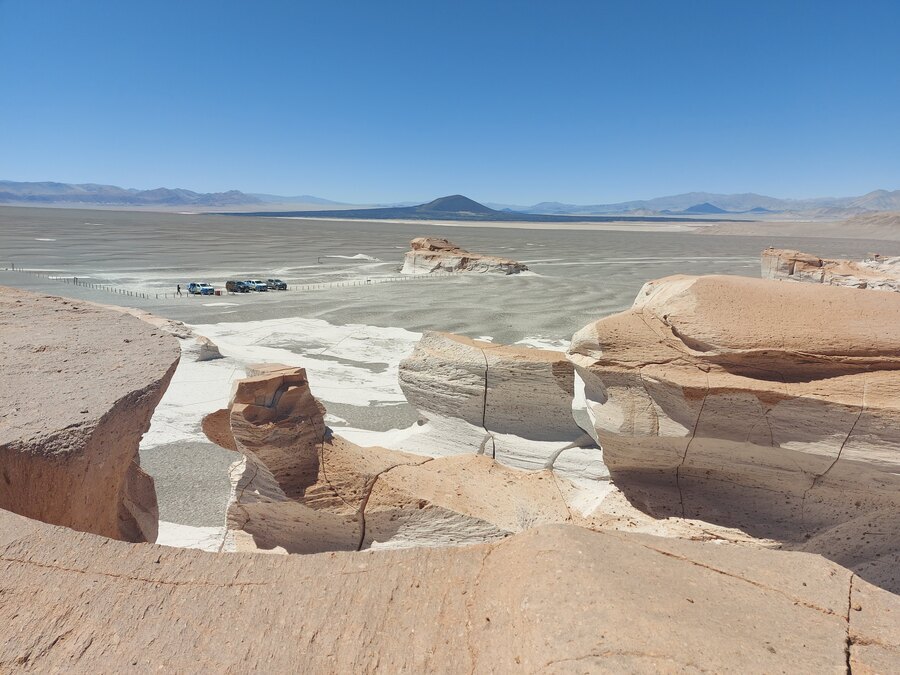Thermopolium discovered in Pompeii
Surprising new discovery in Pompeii: they discovered a fast-food place where there are still remains of food
Archaeologists discovered a thermopolium, where food used to be served to the lower classes of this city of the Roman Empire that was devastated by the eruption of the Vesuvius volcano hundreds of years ago
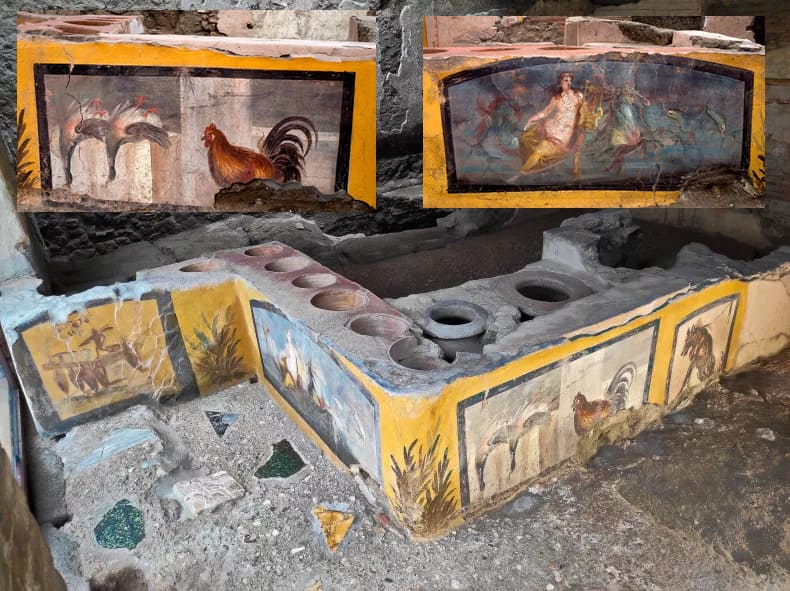
Thermopolium in excellent condition
The archaeological area of Pompeii, the city destroyed in 79 AD. due to the eruption of Vesuvius it never ceases to amaze and today the discovery of a thermopoly was reported, the place where food and drink were served to the inhabitants, intact and decorated and with still food remains.
The Italian Ministry of Culture and the archaeological area announced what they considered “another extraordinary discovery in Pompeii, in the new excavations undertaken within the Regio V area maintenance and restoration project.”
It is a thermopolium, where food used to be served to the lower classes of the city, perfectly preserved with the counter with the image of a sea nymph on horseback and other animals with colors so bright that they seem three-dimensional, they explain.
But what has surprised archaeologists the most is the discovery in the containers with remains of this food that was sold on the street and that is the origin of takeaway food.
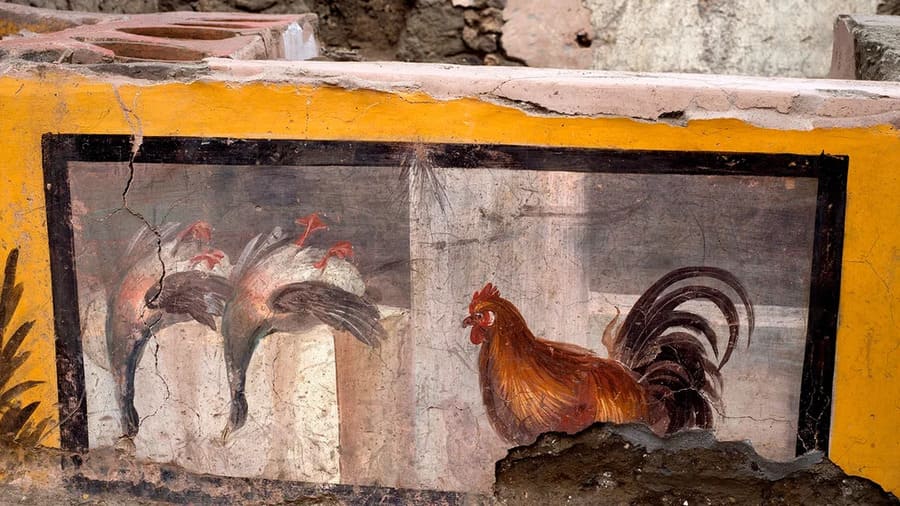
Food was eaten in the outdoor in Pompeii?
It was customary for Pompeians to consume hot food and drinks in the open air. Archaeologists and experts working in the Pompeii archaeological park are already studying the material to see how much this discovery can expand knowledge about food habits in Roman times.
“In addition to being another testimony of daily life in Pompeii, the possibilities of analyzing this thermopoly are exceptional, since for the first time an entire environment has been excavated with cutting-edge methodologies and technologies that are returning unpublished data”, explained Massimo Osanna , general director of the Pompeii Archaeological Park.
Now, with an interdisciplinary work, several analyzes will be carried out in the laboratory to find out the content of the “dolia”, the clay containers in which food was cooked in ancient Rome.
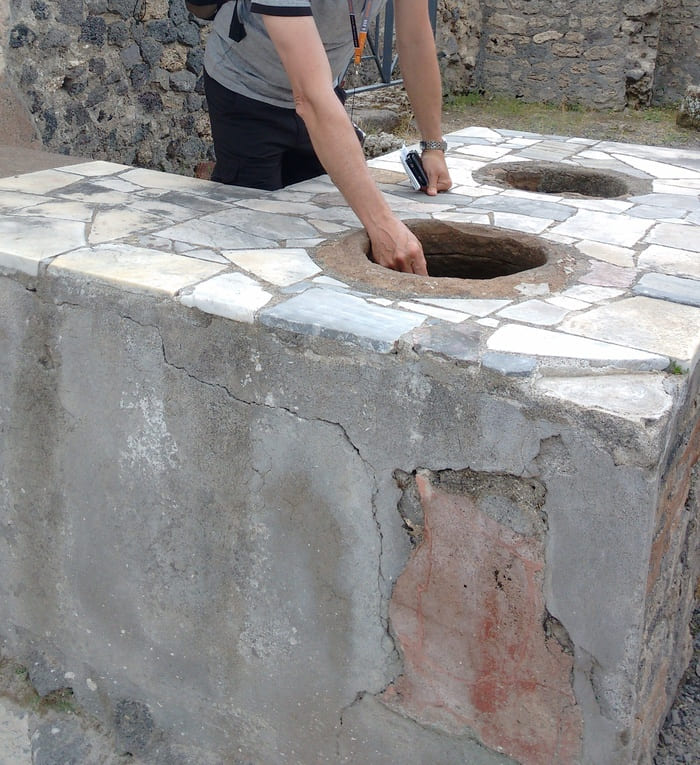
How were the decorations in the thermopolium?
The counter decorations of the thermopolium – the first to emerge from the excavation – show on the front the image of a Nereid (nymph) on horseback in a marine setting and, on the shorter side, the illustration probably from the same shop as a business sign.
Different storage and transport materials were found in the thermopoly. Nine amphorae, a bronze container, two jars and a ceramic pot.
How is the floor of a Thermopolium formed?
The floor of the entire thermopolium room is made up of the so-called cocciopesto, a waterproof coating made up of terracotta fragments in which fragments of polychrome marble have been inserted at some points.
Thermopolies, where hot drinks and food were served, as the name of Greek origin indicates, kept in large dolia (jars) embedded in the masonry counter, were very common in the Roman world. It was also customary to consume the prandium (food) in the open air.
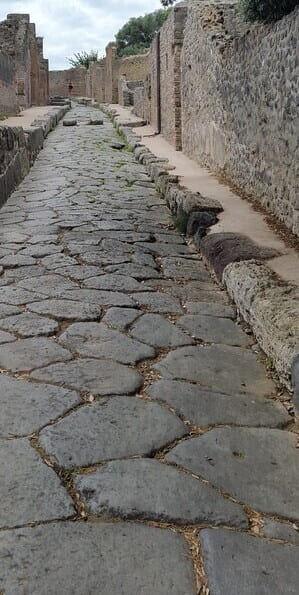
How many thermopolium are there in pompeii?
In Pompeii alone there are about eighty, but none with a completely painted counter, which confirms the exceptional nature of the find.
What foods did the Romans eat in a thermopolium?
The first analyzes confirm that the paintings on the counter represent, at least in part, the food and drinks that were actually sold within the thermopoly: two mallard ducks are represented between the paintings on the counter and, in fact, a bone fragment has been found of duck inside one of the containers, along with pork, goats, fish and land snails, attesting to the great variety of products of animal origin used to prepare the dishes.
On the other hand, the first archaeobotanical analyzes made it possible to identify fragments of deciduous oak, probably belonging to structural elements of the worktop.
How did the ancient Romans drink wine?
At the bottom of a dolio, identified as a wine container at the base of the drinking bottle, which is inside, the presence of intentionally ground beans was identified, which, as Apicius assured, were used to modify the flavor and the color of the wine, whitening it.
Other additional discoveries
Another interesting fact is the discovery of human bones, found partially altered by the passage of tunnels made in modern times by clandestine excavators in search of precious objects. Some are from an individual at least 50 years old that was probably positioned on a bed of which traces remain at the time of the arrival of the pyroclastic current that devastated the city. Other bones, still to be investigated, belong to a second individual and were found inside a large dolium, perhaps placed there by the first excavators.
Related Link









